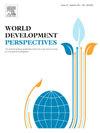建设国家,打击叛军。现代哥伦比亚的军事工程师和基础设施
IF 2.3
Q2 DEVELOPMENT STUDIES
引用次数: 0
摘要
国家通过实体基础设施扩张、建设和巩固其存在。在武装冲突频繁的国家,发展基础设施的理由差别很大。本文分析了哥伦比亚军队在国内武装冲突背景下建设的基础设施,重点关注有武装团体和没有武装团体的地区。通过实地调查、访谈、对战争计划和主要来源的审查和分析,以及来自陆军进行的354个项目的经验数据,我们认为,国家的统一或不均匀存在会影响陆军对基础设施的看法。在政治权威受到挑战或威胁的地区,基础设施被视为打击叛乱的工具。相反,在缺乏竞争的地区,基础设施在武装冲突期间的国家建设中发挥了作用。这些发现使我们能够确定四个不同的区域来说明这种变化。最后,哥伦比亚的经验突出了与基础设施有关的各种愿望,从追求和平到争取政治权力。本文章由计算机程序翻译,如有差异,请以英文原文为准。
Building the State, Fighting the rebels. Military engineers and infrastructure in modern Colombia
The state expands, builds, and consolidates its presence through physical infrastructure. In countries experiencing active armed conflicts, the rationale for infrastructure development varies widely. This article analyses the infrastructure constructed by the Colombian Army in the context of the internal armed conflict, focusing on areas both with and without armed groups. Through fieldwork, interviews, the review and analysis of war plans and primary sources, and empirical data from 354 projects conducted by the Army, we argue that the state’s consolidated or uneven presence influences how the Army perceives infrastructure. Infrastructure is viewed as a tool for combating insurgencies in areas where political authority is challenged or threatened. Conversely, in regions devoid of competition, infrastructure plays a role in state-building during armed conflict. The findings enable us to identify four distinct zones that illustrate this variation. Ultimately, the Colombian experience highlights the diverse aspirations associated with infrastructure, ranging from the pursuit of peace to the struggle for political power.
求助全文
通过发布文献求助,成功后即可免费获取论文全文。
去求助
来源期刊

World Development Perspectives
Social Sciences-Sociology and Political Science
CiteScore
4.50
自引率
0.00%
发文量
65
审稿时长
84 days
期刊介绍:
World Development Perspectives is a multi-disciplinary journal of international development. It seeks to explore ways of improving human well-being by examining the performance and impact of interventions designed to address issues related to: poverty alleviation, public health and malnutrition, agricultural production, natural resource governance, globalization and transnational processes, technological progress, gender and social discrimination, and participation in economic and political life. Above all, we are particularly interested in the role of historical, legal, social, economic, political, biophysical, and/or ecological contexts in shaping development processes and outcomes.
 求助内容:
求助内容: 应助结果提醒方式:
应助结果提醒方式:


